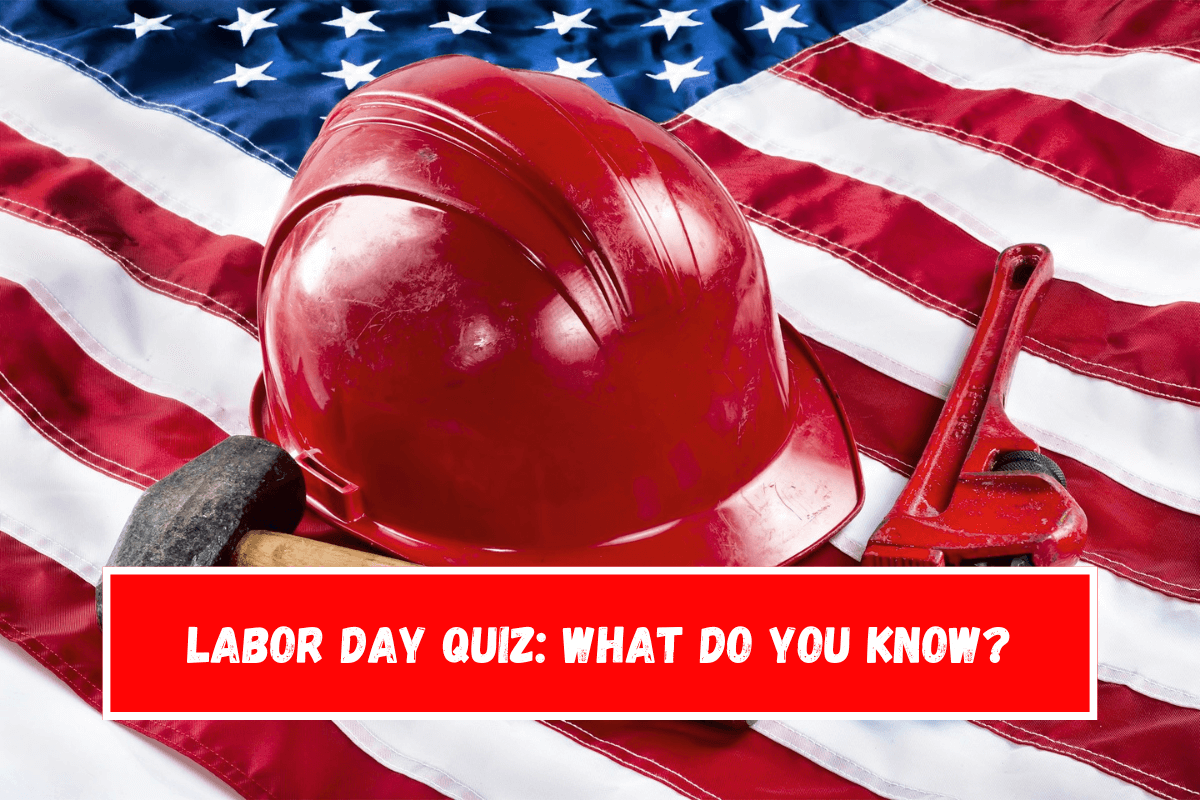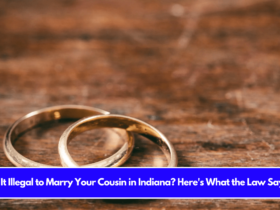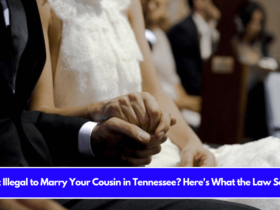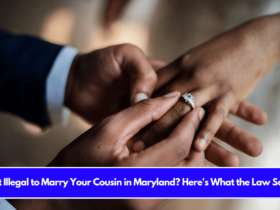The 2024 US Labor Day will be held in September, as it is every year. It shows appreciation for the work that people have done for the country’s growth and prosperity.
US Labor Day 2024: Every year on the first Monday of September, US Labor Day is celebrated. The organization was started in the 1800s to honor the work and accomplishments of American workers.
The Central Labour Union set up the first event for the day on September 5, 1882. It means the end of summer and that the effort to get worker’s rights is being recognized across the country. Also, in 1894, the day was made a public holiday.
Take this quiz below to improve your understanding of the US Labour Day
1. When do Americans celebrate Labour Day in the US?
a) First Monday in September
b) July 4th
c) December 25th
d) Second Sunday in May
Ans. a
Explanation: Labor Day is a federal holiday in the United States celebrated on the first Monday in September to honour and recognise the American labour movement.
2. What serves as the primary objective of Labor Day in the United States?
a) Celebrate the end of summer
b) Honour the contributions of American workers
c) Commemorate a historic battle
d) Pay tribute to military veterans
Ans. b
Explanation: The primary objective of US Labour Day is to achieve fair treatment and equal rights.
3. Which leader of a labour union is frequently linked to the early labour movement and the Haymarket incident?
a) Samuel Gompers
b) Eugene V. Debs
c) Mother Jones
d) Terence Powderly
Ans. b
Explanation: Eugene Victor Debs was an American socialist, political activist, trade unionist, one of the founding members of the Industrial Workers of the World, and a five-time candidate of the Socialist Party of America for President of the United States
4. What cultural practice is frequently related to Labor Day in the US?
a) Trick-or-treating
b) Back-to-school shopping
c) Barbecues and picnics
d) Christmas carolling
Ans. c
Explanation: Labor Day has been a national holiday in the United States since 1894. To many, it may signify picnics, parades, a day off from work, or the end of summer.
5. In what year was the first Labor Day parade held in the United States?
a) 1776
b) 1865
c) 1882
d) 1920
Ans. c
Explanation: The first Labor Day parade in the United States was held in New York City on Tuesday, Sept. 5, 1882.
6. What colour is frequently connected to Labor Day attire, which signifies the unofficial end of summer?
a) Red
b) Green
c) Blue
d) White
Ans. d
Explanation: Labor Day is commonly known as the unofficial end of summer and the end of certain ways of dressing with white as its official colour.
7. Which of the following states was the first to declare Labor Day as an official holiday?
a) New York
b) California
c) Illinois
d) Oregon
Ans.d
Explanation: New York was the first state to introduce a bill, but Oregon was the first to pass a law recognising Labor Day, on February 21, 1887.
8. What does “no white after Labor Day” signify in American fashion?
a) A rule against wearing white clothing after Labor Day
b) A tradition of wearing white to honour labourers
c) A prohibition on using white in home decorations
d) A rule about when to stop using white paint on houses
Ans. a
Explanation: Some historians say brighter clothing was worn by affluent groups who could afford to leave town for a warmer coast when the leaves began to change, whereas the ones who can’t don white.
9. When is Labor Day celebrated in the United States?
a) First Monday in September
b) Last Monday in August
c) First Friday in September
d) Last Friday in August
Ans. a
Explanation: Labor Day is observed on the first Monday in September to honour the American labor movement and the contributions of workers.
10. Which president signed Labor Day into law as a national holiday?
a) Abraham Lincoln
b) Woodrow Wilson
c) Grover Cleveland
d) Theodore Roosevelt
Ans. c
Explanation: President Grover Cleveland signed the bill into law in 1894, making Labor Day a national holiday.
11. Labor Day was first celebrated in which American city?
a) Chicago
b) New York City
c) Boston
d) Philadelphia
Ans. b
Explanation: The first Labor Day parade was held in New York City on September 5, 1882, and organised by the Central Labor Union.
12. What is the main purpose of Labor Day?
a) To honour military veterans
b) To celebrate the end of summer
c) To recognise the contributions of American workers
d) To mark the beginning of the school year
Ans. c
Explanation: Labor Day honors the contributions and achievements of American workers and the labor movement.
13. The Labor Day holiday originated from which movement?
a) The Civil Rights Movement
b) The Women’s Suffrage Movement
c) The American Labor Movement
d) The Environmental Movement
Ans. c
Explanation: Labor Day was born out of the American labor movement, which advocated for workers’ rights and fair labor practices.
14. Which of these is NOT typically associated with Labor Day in the U.S.?
a) Back-to-school sales
b) End-of-summer barbecues
c) Christmas shopping
d) Labor union speeches
Ans. c
Explanation: Christmas shopping is associated with the holiday season, not Labor Day.
15. Labor Day is considered the unofficial end of what season in the U.S.?
- a) Spring
- b) Winter
- c) Summer
- d) Fall
Ans. c
Explanation: Labor Day marks the unofficial end of summer, as schools reopen and the weather begins to cool.
16. Which industry played a significant role in the establishment of Labor Day?
a) Agriculture
b) Manufacturing
c) Information Technology
d) Entertainment
Ans. b
Explanation: The manufacturing industry, particularly the labor unions within it, were key advocates for the establishment of Labor Day.
17. Labor Day was originally intended to honor workers in which sector?
a) Service industry
b) Technology sector
c) Industrial and trade sectors
d) Healthcare sector
Ans. c
Explanation: Labor Day originally focused on honoring workers in industrial and trade sectors, who played a crucial role in building the nation.
18. What event was directly associated with the creation of Labor Day?
a) The Great Depression
b) The Pullman Strike
c) The Boston Tea Party
d) The signing of the Declaration of Independence
Ans. b
Explanation: The Pullman Strike of 1894 led to national attention on labor issues and the establishment of Labor Day.
19. In what year did Labor Day become a federal holiday?
a) 1882
b) 1894
c) 1901
d) 1920
Ans. b
Explanation: Labor Day became a federal holiday in 1894 when President Grover Cleveland signed it into law.
20. Which U.S. state was the first to make Labor Day an official holiday?
a) New York
b) Oregon
c) Pennsylvania
d) California
Ans. b
Explanation: Oregon was the first state to make Labor Day an official holiday in 1887.
21. What is a common activity for Americans on Labor Day?
a) Planting trees
b) Volunteering
c) Watching football
d) Attending church services
Ans. c
Explanation: Watching football, especially the start of the college football season, is a popular Labor Day activity.
22. Why was September chosen for Labor Day instead of May 1st?
a) To avoid association with International Workers’ Day
b) To align with the end of the harvest season
c) To coincide with the start of the school year
d) To mark the anniversary of a major labor union
Ans. a
Explanation: September was chosen to avoid association with International Workers’ Day (May 1st), which had ties to socialist and communist movements.
23. Which of the following is a misconception about Labor Day?
a) It’s a day to honour military veterans
b) It marks the start of the NFL season
c) It’s celebrated with parades and picnics
d) It was created by labor unions
Ans. a
Explanation: Labor Day is not a day to honor military veterans; that is the purpose of Memorial Day and Veterans Day.
24. What is the “Labor Day Sale” typically associated with?
a) Spring cleaning
b) Back-to-school shopping
c) Holiday shopping
d) Winter clothing clearance
Ans. b
Explanation: Labor Day sales are often associated with back-to-school shopping and end-of-summer clearance.
25. How do Canadians observe their Labor Day?
a) On the same day as the U.S.
b) On May 1st
c) On July 1st
d) They do not have a Labor Day
Ans. a
Explanation: Canadians observe Labor Day on the first Monday of September, the same day as the U.S.
You Might Like| What is Labor Day? Know its History, Significance, Facts & More
26. What flower is commonly associated with Labor Day?
a) Rose
b) Lily
c) Marigold
d) None
Ans. d
Explanation: Labor Day is not associated with any specific flower.
27. Which of these is a global equivalent of Labor Day in the U.S.?
a) May Day
b) Bastille Day
c) Boxing Day
d) Independence Day
Ans. a
Explanation: May Day, celebrated on May 1st, is an international holiday honouring workers and the labor movement.
28. Which of the following is NOT a common reason for the creation of Labor Day?
a) To reduce work hours
b) To improve working conditions
c) To celebrate the end of slavery
d) To recognize workers’ rights
Ans. c
Explanation: Labor Day was created to reduce work hours, improve working conditions, and recognise workers’ rights, not to celebrate the end of slavery.
29. Which country inspired the U.S. labor movement that led to Labor Day?
a) Canada
b) France
c) Germany
d) United Kingdom
Ans. a
Explanation: The U.S. labor movement was partly inspired by the labor movement in Canada, where a similar holiday was observed.
30. Which labor leader is often credited with proposing the idea of Labor Day?
a) Samuel Gompers
b) Peter J. McGuire
c) Eugene V. Debs
d) John L. Lewis
Ans. b
Explanation: Peter J. McGuire, co-founder of the American Federation of Labor, is often credited with proposing the idea of Labor Day.
31. What is the significance of the “Haymarket Affair” with Labor Day?
a) It was the first Labor Day celebration
b) It led to the establishment of May Day as an international workers’ holiday
c) It was the reason Labor Day was moved to September
d) It was the first labor strike in the U.S.
Ans. b
Explanation: The Haymarket Affair in Chicago led to the establishment of May Day as an international workers’ holiday, not directly to Labor Day.
32. Which of the following is a common misconception about Labor Day in the U.S.?
a) It celebrates the achievements of workers
b) It marks the beginning of the school year
c) It is a federal holiday
d) It honours military service
Ans. d
Explanation: Labor Day honours the achievements of workers, not military service, which is recognised on Memorial Day and Veterans Day.
33. In which decade did the Labor Day holiday begin to take on its modern form with parades and barbecues?
- a) 1870s
- b) 1880s
- c) 1890s
- d) 1900s
Ans. c
Explanation: The 1890s saw the establishment of Labor Day as a federal holiday, and it began to take on its modern form with parades and barbecues during this time.
34. Which famous American speech is associated with Labor Day?
a) The Gettysburg Address
b) The “I Have a Dream” speech
c) The “Labor is the Superior of Capital” speech
d) The “Four Freedoms” speech
Ans. c
Explanation: The “Labor is the Superior of Capital” speech by Abraham Lincoln is often associated with the ideals celebrated on Labor Day.
35. Which of the following is NOT a symbol commonly associated with Labor Day?
a) Tools and machinery
b) Flags
c) Fireworks
d) Union banners
Ans. c
Explanation: While fireworks are common on Independence Day, they are not a typical symbol of Labor Day, which is more associated with tools, machinery, and union banners.
36. What does Labor Day signify for American sports fans?
a) The beginning of the NBA season
b) The start of the Major League Baseball season
c) The beginning of the college football season
d) The start of the NHL season
Ans. c
Explanation: Labor Day often marks the beginning of the college football season, making it significant for American sports fans.
37. Which of these labor-related events is commemorated around the world, but not on Labor Day?
a) The Triangle Shirtwaist Factory fire
b) International Workers’ Day
c) The Great Railroad Strike
d) The Homestead Strike
Ans. b
Explanation: International Workers’ Day, celebrated on May 1st, is a global event, but it is not commemorated on Labor Day in the U.S.
38. What is one of the primary reasons why Labor Day became a popular holiday in the late 19th century?
a) To provide workers with a day of rest and leisure
b) To honor the military
c) To commemorate the signing of the U.S. Constitution
d) To celebrate harvest festivals
Ans. a
Explanation: Labor Day became popular as a day to provide workers with rest and leisure, acknowledging their contributions to society.
39. How do many Americans use the Labor Day weekend?
- a) To travel for vacation
- b) To do spring cleaning
- c) To prepare for Thanksgiving
- d) To shop for Christmas gifts
Ans. a
Explanation: Many Americans use the Labor Day weekend as an opportunity to travel, marking it as one of the busiest travel weekends of the year.
40. Which American city is known for having the longest continuous Labor Day parade?
a) New York City, NY
b) Detroit, MI
c) Chicago, IL
d) Brooklyn, NY
Ans. d
Explanation: Brooklyn, New York, is known for having the longest continuous Labor Day parade, which started in 1882.
41. Labor Day is part of a three-day weekend known as what?
a) Memorial Day Weekend
b) Presidents’ Day Weekend
c) Labor Day Weekend
d) Independence Day Weekend
Ans. c
Explanation: Labor Day Weekend refers to the three-day weekend that includes Labor Day, often celebrated with various events and activities.
42. Which sector saw significant labor strikes that helped pave the way for Labor Day?
a) Technology
b) Agriculture
c) Railroad
d) Retail
Ans. c
Explanation: The railroad sector, particularly the Pullman Strike, saw significant labor strikes that brought attention to workers’ rights and led to the creation of Labor Day.
43. What is a common way for labor unions to celebrate Labor Day?
a) Hosting job fairs
b) Organising parades and speeches
c) Running political campaigns
d) Holding charity events
Ans. b
Explanation: Labor unions often celebrate Labor Day by organising parades and speeches to honour workers and advocate for their rights.
44. Which of these holidays is often seen as the counterpart to Labor Day in the spring?
a) Memorial Day
b) Veterans Day
c) Presidents’ Day
d) Independence Day
Ans. a
Explanation: Memorial Day, celebrated in late May, is often seen as the counterpart to Labor Day, marking the beginning of summer, while Labor Day marks the end.
45. What was one of the main goals of early Labor Day advocates?
a) To establish a minimum wage
b) To create a national day of rest for workers
c) To promote the 8-hour workday
d) To advocate for women’s suffrage
Ans. c
Explanation: One of the main goals of early Labor Day advocates was to promote the 8-hour workday as a standard for American workers.
46. Which social issue was closely linked to the labor movement in the early 20th century?
a) Prohibition
b) Civil rights
c) Environmental conservation
d) Women’s suffrage
Ans. b
Explanation: The labor movement was closely linked to the civil rights movement, as both fought for equality and better treatment of marginalized groups.
47. How do some communities mark Labor Day as the unofficial end of summer?
a) By hosting beach parties
b) By closing public pools
c) By organising harvest festivals
d) By holding fireworks displays
Ans. b
Explanation: In many communities, Labor Day marks the unofficial end of summer, often signified by the closing of public pools and other summer facilities.
48. Which phrase is often associated with Labor Day regarding fashion?
a) “No white after Labor Day”
b) “Spring forward, fall back”
c) “Dress for success”
d) “Business casual only”
Ans. a
Explanation: The phrase “No white after Labor Day” is commonly associated with fashion, reflecting an old tradition of changing seasonal attire.
49. What was a key factor in the spread of Labor Day celebrations across the U.S.?
a) Support from major industrialists
b) The rise of labor unions
c) The influence of European labor movements
d) The involvement of the federal government
Ans. b
Explanation: The rise of labor unions was a key factor in spreading Labor Day celebrations, as unions advocated for a day to honour workers’ contributions.
50. Which amendment to the U.S. Constitution, ratified in 1938, is closely related to the labor movement and Labor Day’s goals?
a) 16th Amendment (Income Tax)
b) 18th Amendment (Prohibition)
c) 21st Amendment (Repeal of Prohibition)
d) Fair Labor Standards Act (FLSA)
Ans. d
Explanation: The Fair Labor Standards Act (FLSA) of 1938, which established minimum wage, overtime pay, and child labor laws, is closely related to the goals of the labor movement that Labor Day celebrates.
Finally, today is Labour Day, which is not only a holiday but also a sign of how hardworking Americans are. It gives families and friends a chance to get together for parades, picnics, and parties. Have a great Labor Day!















Leave a Reply